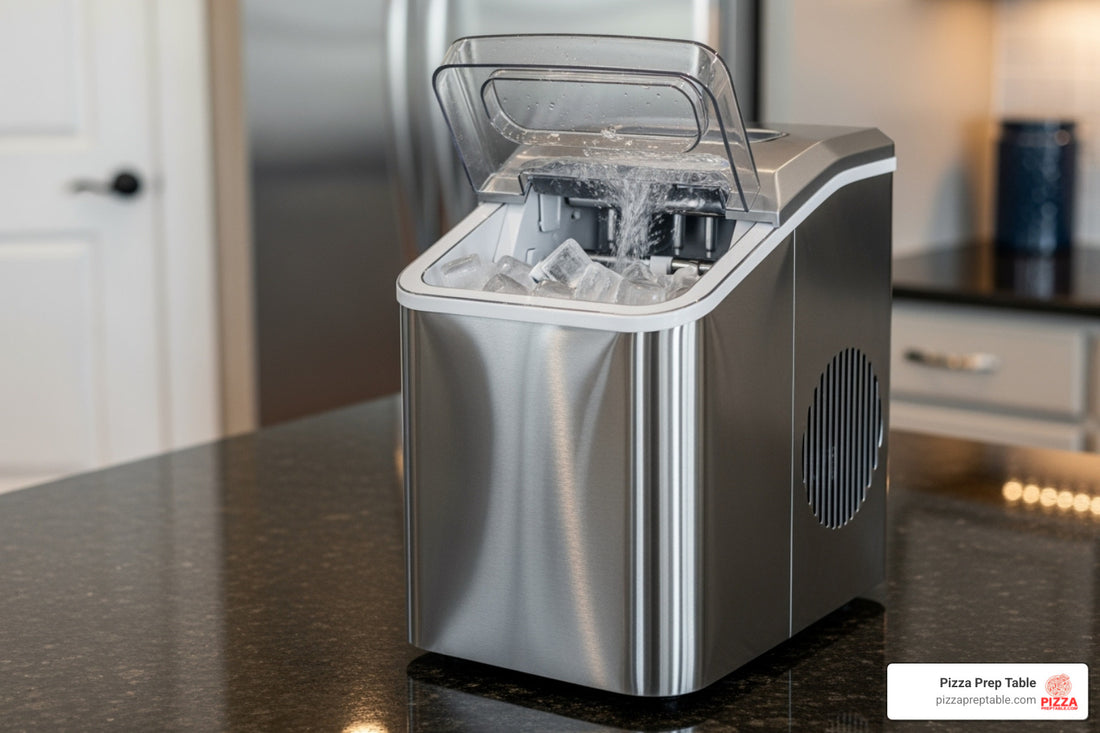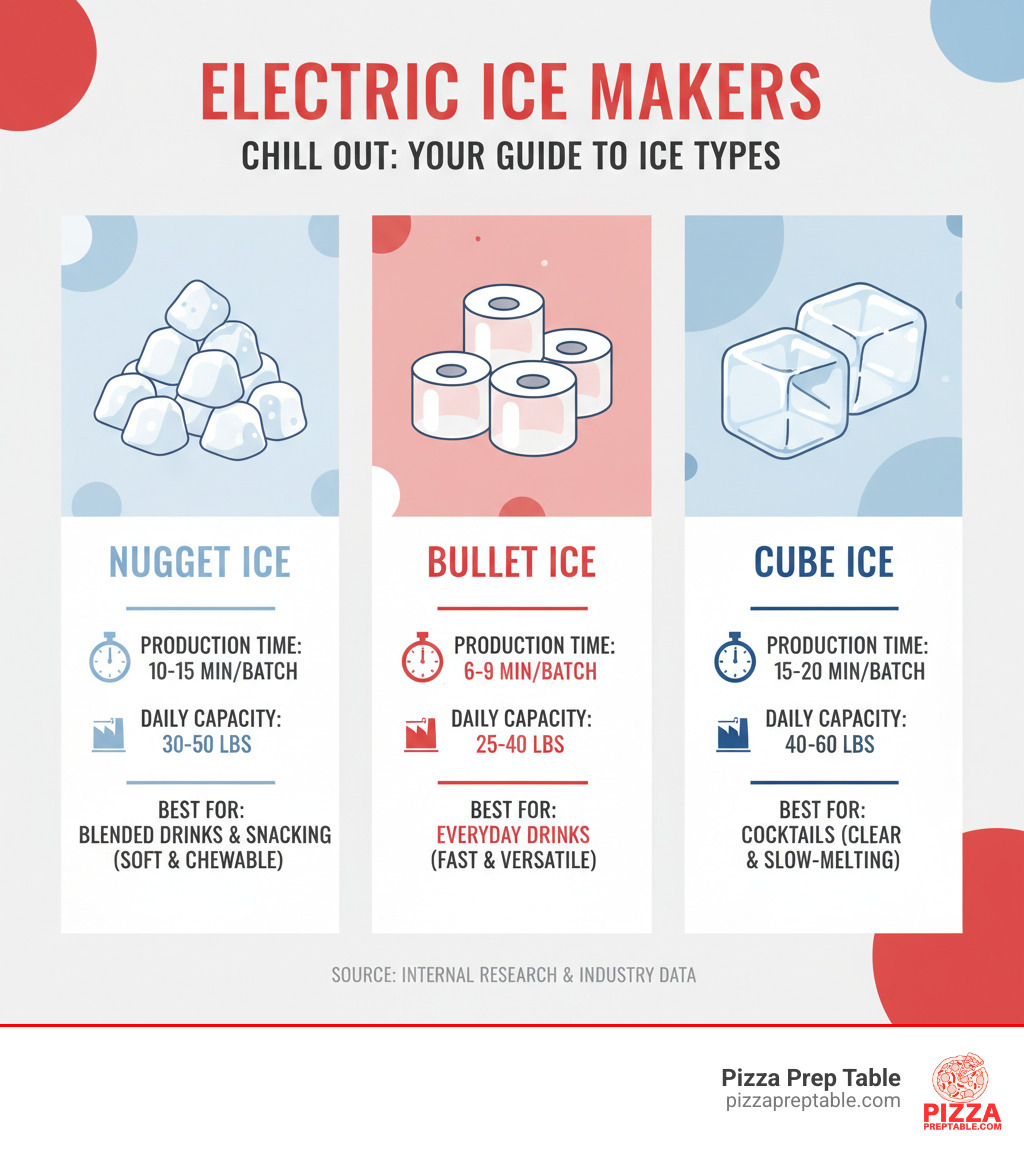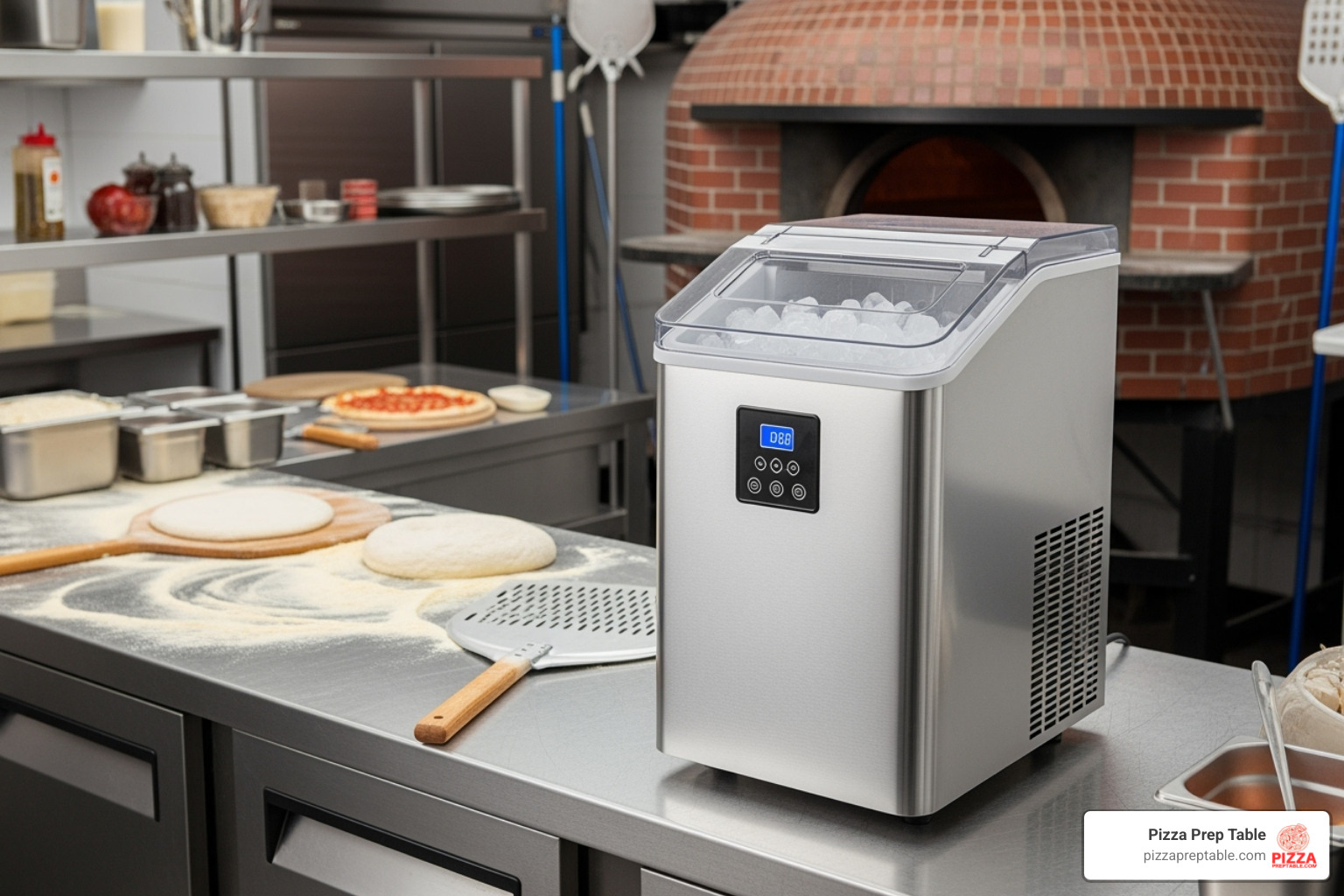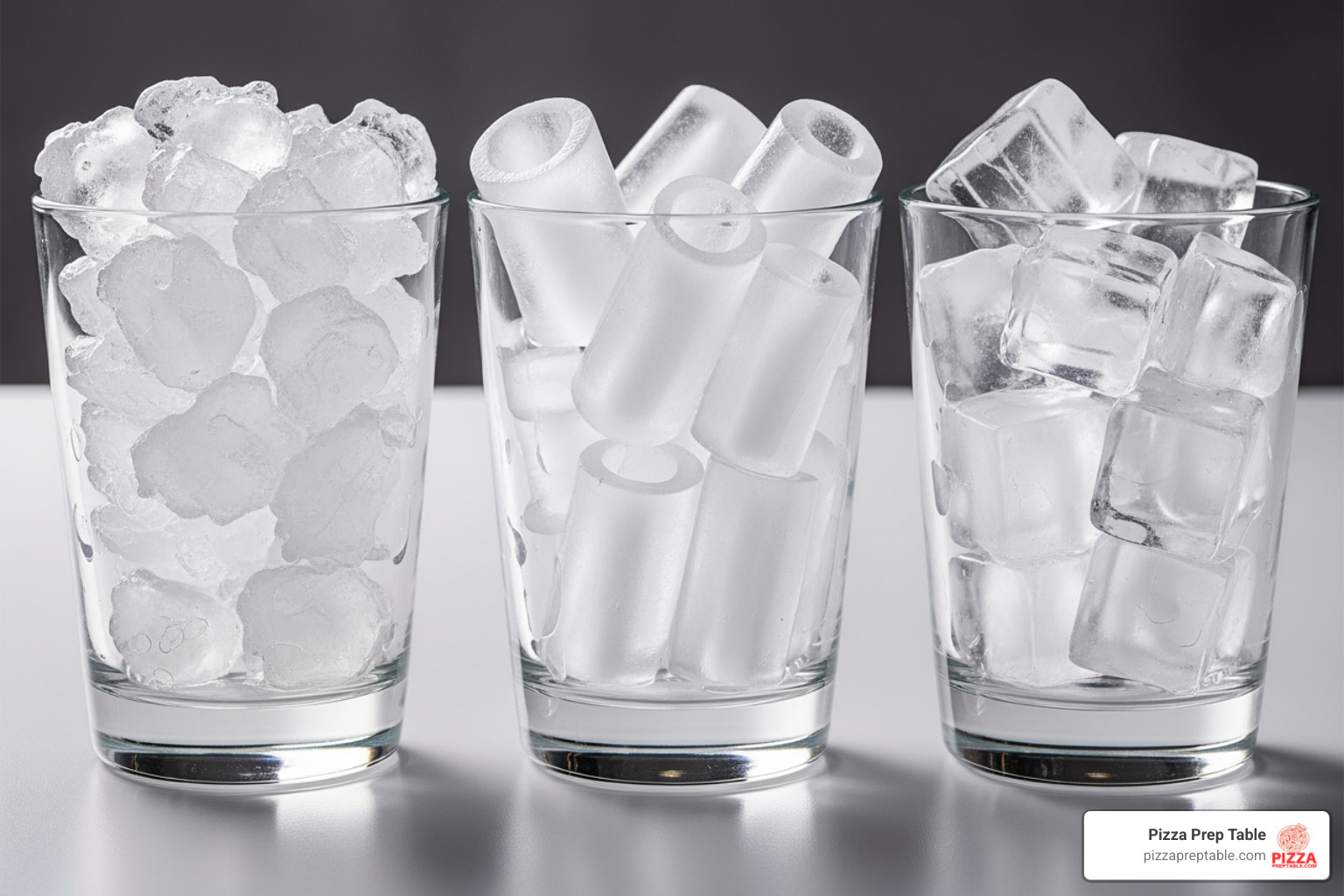
Chill Out: Best Portable Electric Ice Makers Reviewed
Share
Why an Electric Ice Maker is a Must-Have for Your Kitchen
An electric ice maker is an appliance that automatically produces ice, eliminating the need for freezer trays. Whether you're hosting parties, running a small pizzeria, or just want ice on demand, these machines are a game-changer. Countertop models can make their first batch in as little as 6 minutes, with daily outputs from 26 to 65 pounds.
Top Electric Ice Maker Types:
- Countertop/Portable Models: $40-$600, produce 26-50 lbs/day, no installation required.
- Under-Counter Built-In Models: $1,700-$4,500+, higher capacity, requires plumbing.
- Nugget Ice Makers: Produce soft, chewable "Sonic-style" ice, $140-$550.
- Bullet Ice Makers: Fast production (6-9 minutes), slow-melting, most affordable.
Key Features to Consider:
- Production capacity: 26-65 lbs per day for home use.
- Ice type: Bullet (fast), nugget (chewable), or clear cube (premium).
- Self-cleaning function: Essential for easy maintenance.
- Portability: Built-in handles for RVs, camping, and parties.
For commercial kitchens and restaurants, reliable ice production is non-negotiable. Portable electric ice makers offer flexibility for smaller spaces while delivering the volume needed for daily operations. The market offers everything from budget-friendly bullet ice makers to premium nugget ice machines. The key is matching the right type to your specific needs—whether that's production speed, ice shape, or maintenance features.
I'm Sean Kearney, and my years in sales have taught me that the right electric ice maker can transform kitchen efficiency, especially in small restaurants where every square foot counts. I've helped countless pizzeria owners select equipment that maximizes space while controlling costs.

Top Picks: The Best Electric Ice Maker Models of the Year
Finding the right electric ice maker doesn't have to be overwhelming. The best model isn't always the most expensive—it's the one that fits your specific needs. This section reviews top-rated portable ice makers to help you find the perfect match for your home, office, or small café.
Best Overall: Pizza Prep Table Commercial Countertop Ice Maker
This commercial-grade countertop unit delivers flexibility and power, letting you choose between chewable nugget ice and classic bullet ice. With a production capacity of 38 to 44 pounds of ice per day, it can handle a dinner rush at a pizzeria or a large backyard barbecue. Models like the VIVOHOME 2-in-1 Electric Countertop Automatic Ice Maker and Shaver exemplify this category's performance.
The durable stainless steel construction looks sharp and is built to last, wiping clean in seconds. Its straightforward controls make it easy for anyone to operate. This type of electric ice maker is ideal for homes that entertain frequently, busy office break rooms, or small businesses like coffee shops and pizzerias needing consistent ice production without a large footprint.

Best Value for Home & Office: Pizza Prep Table Compact Ice Maker
For reliable ice without a high cost or large footprint, compact bullet ice makers are a top choice. These units—like the VIVOHOME Electric Portable Compact Countertop Automatic Ice Cube Maker or the Frigidaire Compact Countertop Ice Maker—produce 26 pounds of ice per day, which is ample for most households and small offices. They work fast, delivering 9 fresh ice cubes in just 6 to 9 minutes.
A self-cleaning function simplifies maintenance, and the portable design with a built-in handle makes these machines mobile enough for patios, parties, or RV trips. Most come with an ice scoop and basket, offering incredible value for under $150. They're perfect for dorm rooms, small apartments, and offices.
Best for Entertaining: Pizza Prep Table High-Capacity Ice Maker
To avoid running out of ice while hosting, a high-capacity electric ice maker is essential. This category includes machines that produce nugget ice—the soft, chewable, restaurant-style ice that guests love. Brands like GE Profile Opal and VIVOHOME's higher-end nugget ice makers produce 33 to 44 pounds per day.
These machines feature larger storage bins and are compact enough for countertop use or can be built-in under a bar for a professional look. The self-cleaning feature is a major plus for frequent entertainers. If you're serious about upgrading your home bar, these units deliver a restaurant-quality experience. While building your entertaining space, our guide on mini fridges that mean business can help keep drinks chilled.
Fastest Ice Production: Pizza Prep Table Rapid Ice Maker
When speed is the top priority, a rapid production electric ice maker is the best investment. These machines are engineered to make bullet or small cube ice, delivering 9 cubes in as little as 6 to 7 minutes. Models like the Auseo 26lbs/24H Countertop Ice Maker or the SMUG Countertop Ice Maker excel when you need ice immediately.
The integrated carry handle makes them easily portable for camping, RVs, or outdoor parties. Most include auto-cleaning functions and allow you to choose between small and large bullet ice sizes. They are perfect for busy households or small commercial settings where on-demand ice is crucial.
Buyer's Guide: How to Choose the Right Portable Ice Maker
Choosing an electric ice maker means matching your needs with the right features. This guide covers the essential factors to consider, from ice type to production speed, to help you find the best appliance for your home or pizzeria.
Production Capacity and Speed
Two numbers matter most: how much ice it makes (capacity) and how fast (speed). Production capacity is measured in pounds per 24 hours. For casual home use or a small office, 26-30 pounds per day is usually sufficient. If you entertain regularly or run a small business, look for models that produce 33-44 pounds per day to keep up with demand. Some high-end countertop models can even produce 50-65 pounds.
Production speed refers to how quickly the first batch of ice is ready. Most compact electric ice makers can produce 9 bullet-shaped cubes in just 6 to 9 minutes. Nugget ice makers are slightly slower, taking 10-15 minutes for the first batch. Also, consider the storage bin capacity, which is typically 1-3 pounds for portable units. Since they are designed for on-demand production, you'll need to transfer ice to a freezer for stockpiling.
Types of Ice: Nugget vs. Bullet vs. Cube
The type of ice your machine makes affects the drinking experience. Each has a specific purpose.
- Nugget Ice: Often called "the good ice," this soft, chewable ice is porous and absorbs the flavor of drinks. It's ideal for soft drinks and blended cocktails. The GE Profile Opal 2.0 specializes in this style, which is a customer favorite in pizzerias.
- Bullet Ice: This is the most common type from countertop machines. These cylindrical, hollow pieces chill drinks quickly without melting too fast, making them versatile for everyday use. Their fast production speed (6-9 minutes) is a major advantage.
- Clear Cube Ice: This is the dense, slow-melting ice found in upscale bars. It's perfect for premium spirits like whiskey where minimal dilution is desired. It's less common in portable units and more typical of under-counter models.

Key Features to Look For in an Electric Ice Maker
Beyond the basics, these features add convenience and improve the user experience.
- Self-Cleaning Function: This is an essential feature that circulates water to flush out mineral buildup, drastically reducing manual cleaning efforts.
- Portability and Handles: If you plan to move the unit, look for a compact, lightweight design with integrated carry handles.
- Multiple Ice Sizes: Many bullet ice makers let you choose between small and large cubes, offering flexibility for different drinks.
- Drain Type: Portable models use a manual drain plug, while built-in units require a connection to your plumbing.
- Noise Levels: All ice makers produce some noise from their compressor. If it will be in a quiet area, check reviews for mentions of noise.
- Smart Features: Premium models like the GE Profile Opal 2.0 offer Wi-Fi connectivity for remote control via a smartphone app.
Also, look for included accessories like an ice scoop and basket. For the best-tasting ice, using high-quality water is key. If your primary ice source is a refrigerator, our guide on filters for refrigerator ice makers can help ensure top-notch water quality.
Countertop vs. Under-Counter Models
Your choice here depends on space, budget, and ice needs.
Countertop models are portable, require no professional installation (just plug them in and add water), and are affordable, typically ranging from $40 to $600. They are perfect for homes, offices, RVs, or as a supplementary ice source for a small pizzeria.
Under-counter models are permanent installations built into cabinetry. They require professional plumbing for a water line and drain and should be installed per the manufacturer's instructions. Their price reflects this, starting around $1,700 and exceeding $4,500. These are for high-end home bars or commercial businesses needing a large, continuous ice supply and a seamless, integrated look.
Maintenance and Care for Your Appliance
Proper maintenance is the secret to keeping your electric ice maker running smoothly and producing fresh-tasting ice for years. Fortunately, modern features make upkeep easier than you might think.
The Importance of the Self-Cleaning Feature
A self-cleaning function is a significant convenience. When activated, the machine circulates water through its internal system to flush out loose mineral deposits. This routine flushing helps maintain cleanliness and ensures your ice tastes fresh. For example, the PF11 Ionchill Automatic Ice Maker User Guide details how its 30-minute cycle works.
However, a self-cleaning cycle is for routine maintenance, not a deep clean. Over time, especially with hard water, stubborn mineral deposits (limescale) can build up. To remove this, you'll need to descale the machine with a solution of white vinegar or a dedicated ice maker cleaner. Always follow your model's specific instructions for cleaning solutions and procedures. The best way to prevent scale buildup is to use filtered water and run the self-cleaning function regularly (weekly is ideal).
Water Quality and Long-Term Storage
The water you use directly impacts your ice's taste and your machine's longevity. Using filtered, purified, or bottled water is the single best thing you can do for your ice maker. Hard water contains minerals that cause cloudy ice, off-tastes, and scale buildup that can damage internal components. Filtered water minimizes these issues.
If you plan to store your electric ice maker for an extended period, proper preparation is key:
- Drain the unit completely using the drain plug to prevent mold, mildew, and freeze damage.
- Thoroughly dry the interior with a soft cloth and leave the lid open to air out.
- After moving the unit, let the refrigerant settle by leaving it upright for at least 2-24 hours (check your manual) before plugging it in. This protects the compressor from damage.
These simple habits will reward you with years of reliable performance.
Frequently Asked Questions about Electric Ice Makers
After helping countless pizzeria owners and home enthusiasts, I've noticed the same questions pop up again and again. Here are answers to the most common ones to help you make a smart purchase.
What is the typical price range for electric ice makers?
The price of an electric ice maker depends on its type, capacity, and features.
Countertop and portable models are the most common for home use and range from about $40 to $600. Budget-friendly bullet ice makers start around $50, while mid-range models with more features fall between $110 and $200. Premium portable units, especially those that make nugget ice like the GE Profile Opal 2.0, can cost $500 or more.
Under-counter or built-in models are a larger investment, designed for permanent installation in high-end home bars or commercial kitchens. These typically range from $1,700 to over $4,500, with brands like JennAir, KitchenAid, and Marvel occupying this space.
Factors like brand reputation, daily production capacity, and the type of ice (nugget and clear ice makers are often more expensive) all influence the final cost.
What kind of water should I use in my portable ice maker?
For the best results, always use filtered, purified, or bottled water. Tap water, especially if it's hard, contains minerals that can cause several problems:
- Prevents Mineral Buildup: Using filtered water reduces scale deposits on internal components, which improves efficiency and prevents damage.
- Improves Ice Taste and Clarity: Impurities in tap water can make ice cloudy and give it an unpleasant taste. Purified water produces clear, neutral-tasting ice.
- Extends Machine Longevity: Less mineral buildup means less wear and tear on your electric ice maker, helping it last longer.
As a rule of thumb, change the water in the reservoir every 24 hours to maintain hygiene and freshness.
How energy efficient is an electric ice maker?
Most modern countertop electric ice makers are reasonably energy efficient. They typically draw between 95W and 150W while actively making ice, which is comparable to other small kitchen appliances like a coffee maker. Many newer models also use R600a refrigerant, a more environmentally friendly and efficient option than older refrigerants.
You generally won't find Energy Star ratings on portable ice makers, as they fall outside the scope of that program, which focuses on larger appliances. This doesn't mean they are inefficient. When not actively producing ice, the machine uses a minimal amount of standby power.
For typical home use, the impact on your electricity bill is small, often just a few dollars per month. To minimize energy consumption, simply unplug the unit when it's not in use for an extended period.
Conclusion: Find Your Perfect Chill
We've covered everything you need to find the perfect electric ice maker. From rapid-fire bullet ice makers to premium nugget ice machines, you now know how to choose based on production capacity, ice type, and key features. You understand the difference between portable countertop models and permanent under-counter installations, and the importance of maintenance and water quality.
With prices ranging from budget-friendly $50 options to premium $500+ machines, there is an electric ice maker for every purpose. For our pizzeria and restaurant partners, a reliable ice maker is essential. While the countertop models featured here are great for smaller needs, larger operations require more robust solutions. PizzaPrepTable.com offers a range of commercial options, and our ice machine leasing options provide a flexible path to getting the equipment you need without a large upfront investment.
An electric ice maker pays for itself in convenience and the simple joy of having fresh, abundant ice whenever you need it. No more emergency store runs or warm beverages—just perfectly chilled drinks on demand.
